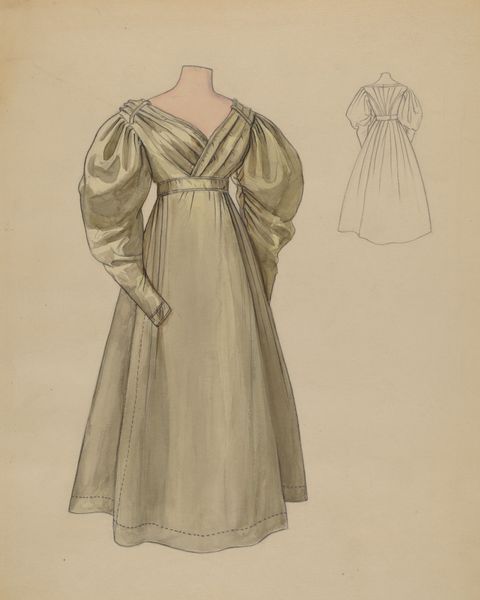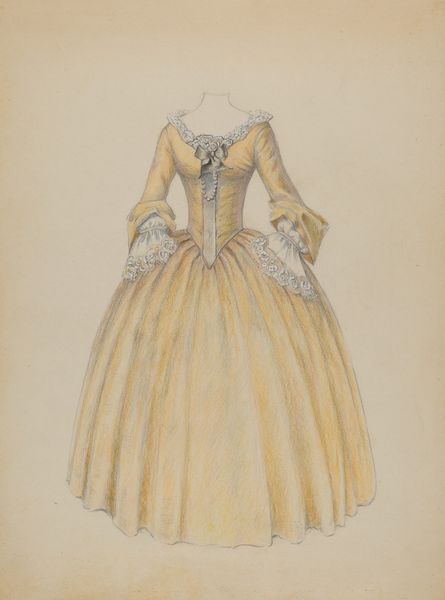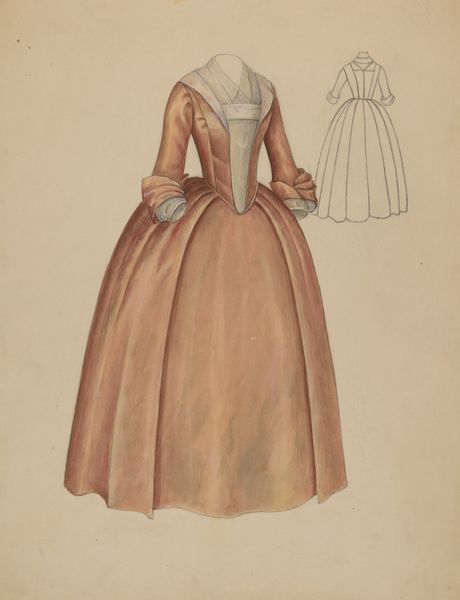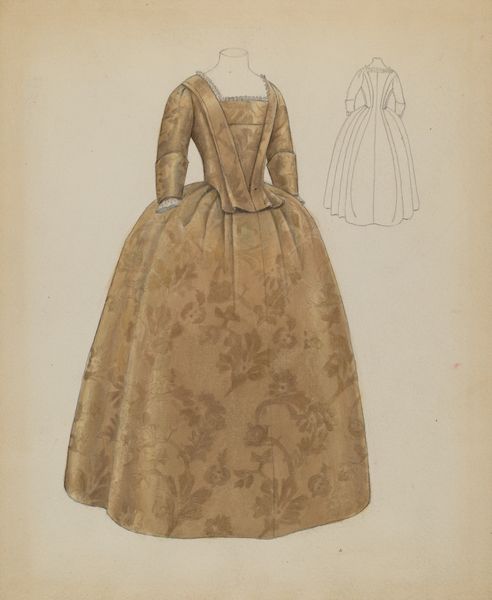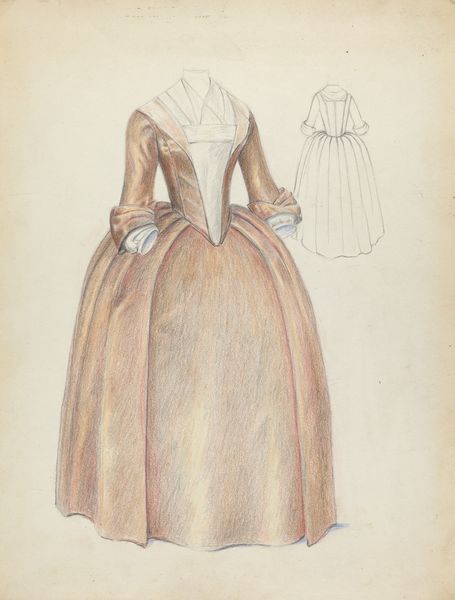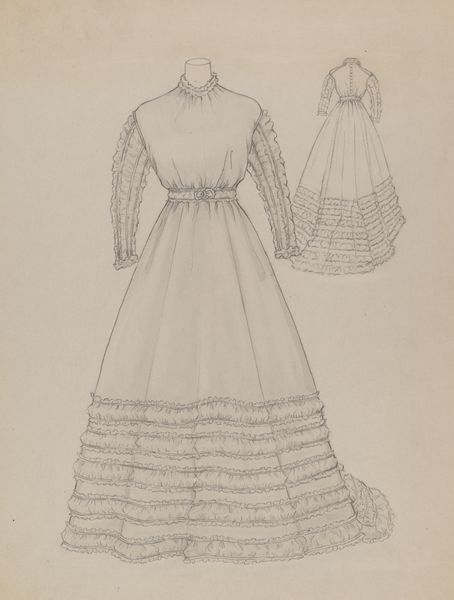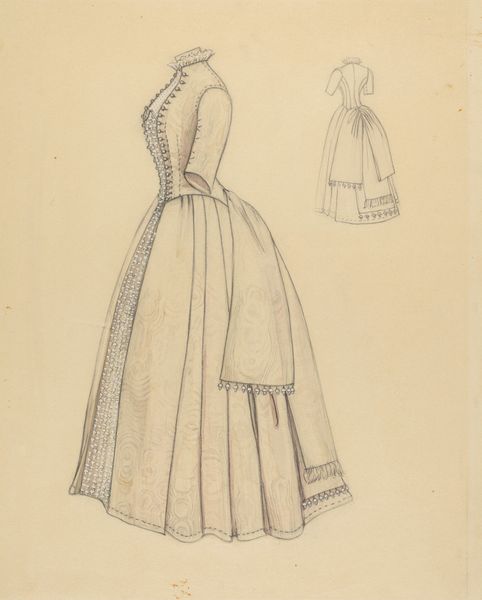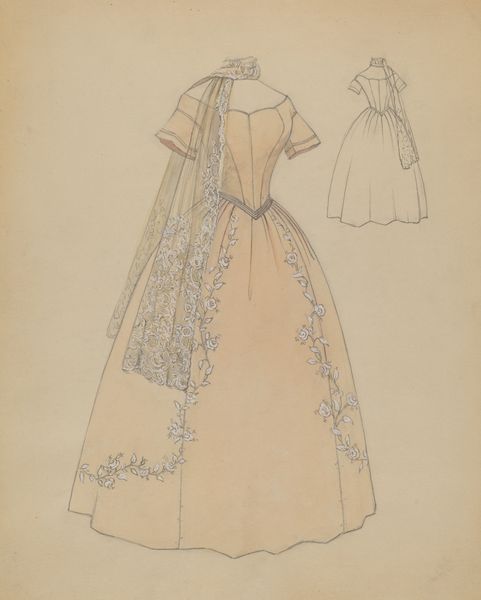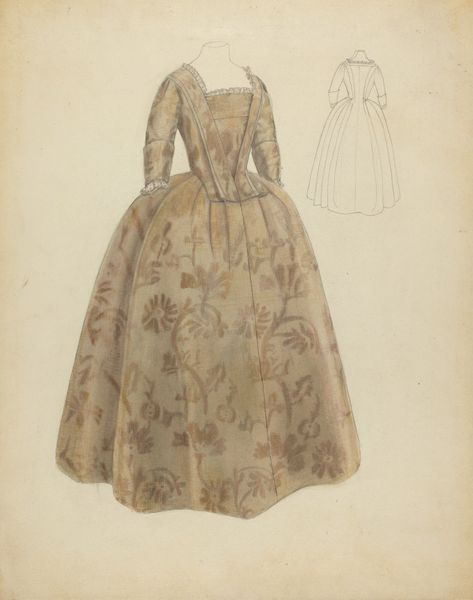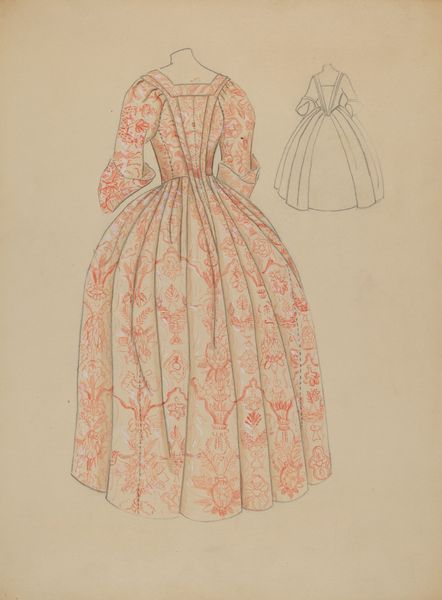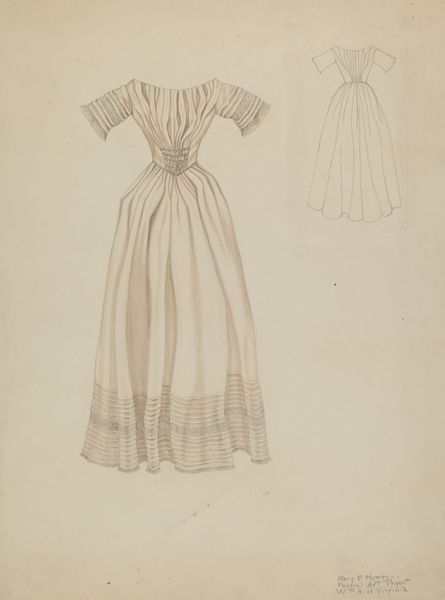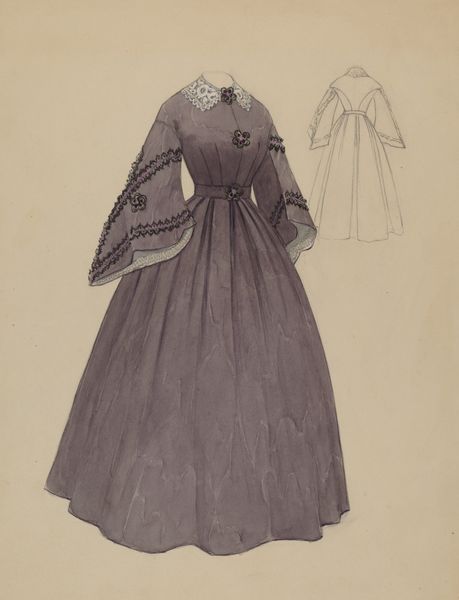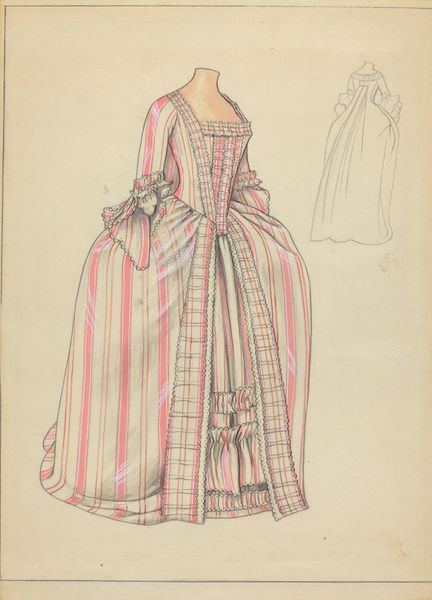
drawing, pencil
#
portrait
#
drawing
#
underwear fashion design
#
light pencil work
#
fashion mockup
#
fashion and textile design
#
historical fashion
#
traditional dress
#
pencil
#
wedding dress
#
decorative-art
#
fashion sketch
#
clothing design
#
bridal fashion
Dimensions: overall: 29.1 x 23 cm (11 7/16 x 9 1/16 in.)
Copyright: National Gallery of Art: CC0 1.0
Editor: So, this is Lee Hager’s “Wedding Dress,” dating from 1935 to 1942. It’s a pencil drawing and gives such a strong sense of pre-war fashion design, all delicate and refined. What do you see when you look at it? Curator: I see more than just a design; I see a cultural artifact loaded with social and political context. Think about the period: the Great Depression followed by the build-up to World War II. What does it mean to be designing a wedding dress, a symbol of hope and new beginnings, during such uncertain times? Editor: That’s interesting! I was so focused on the dress itself. Did these social issues influence fashion at that time? Curator: Absolutely. The elaborate, almost theatrical quality of the design speaks to a desire for escape, a yearning for beauty in a world increasingly dominated by hardship. Who was Hager designing for? Was she trying to appeal to wealthier clientele who could afford such luxury, or was it more of an aspirational piece for wider consumption through, say, magazines? Editor: So the drawing becomes not just about the dress but about who it's for, and what that says about society. Curator: Precisely. And we have to consider the institutions involved, the galleries or publications that might have showcased such designs. How did they shape the narrative around fashion and marriage during this era? How might this garment have been received? Editor: That adds so many layers! I never considered how socio-political forces might influence a simple wedding dress design. Curator: And that, perhaps, is the most important thing about art; it isn’t created in a vacuum, but responds to the world around it. Every stroke has the potential to tell a story, not only of aesthetics, but of history and human aspiration. Editor: Definitely given me a lot to reflect on, and different perspectives on dress design in this time.
Comments
No comments
Be the first to comment and join the conversation on the ultimate creative platform.

